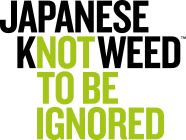Can knotweed be killed?
One of the most common myths is that bleach or burning can kill knotweed. Bleach refers to a large class of compounds used to whiten or color-lighten materials, frequently used for cleaning and disinfection. Whilst bleach is effective at killing most types of viruses, bacteria, molds, mildews, and algae, it is not effective at killing knotweed.
Should bleach be used to kill knotweed?
Bleach should not be used to kill plants as it is harmful to the environment. If chlorine gets into the ground its high Ph and salt levels will alter the ecosystem, making it difficult for some species to thrive or survive, especially organisms such as fungi that are essential for maintaining a healthy habitat. Chlorine also produces gasses that are harmful to the air we breathe and also the ozone.
What is the best chemical to kill Japanese knotweed?
The herbicide Glyphosate is the best chemical to control knotweed infestations. Used as part of a long-term treatment plan, each application exhausts the plant, forcing it into a dormant state. Whilst Glyphosate has its fair share of negative press, recent reports show that it is safe to use by trained and qualified professionals, and is the most effective method of control. Herbicide can be applied by spraying, stem injecting or leaf wiping.
Independent regulatory bodies around the world have looked at the available scientific evidence and concluded that glyphosate poses little or no risk to people when used correctly.
On March 15, 2017, the Committee for Risk Assessment (RAC) of the European Chemicals Agency (ECHA) completed an extensive review of all the available scientific evidence on glyphosate and concluded it should not be classified as a carcinogen or as a substance that causes genetic or reproductive effects. ECHA is a regulatory authority on the safety of chemicals and a key adviser to the European Commission on the risks of substances to human health.
Tim Bowmer, the committee’s chair, said: “RAC agreed with the German dossier submitter that glyphosate should not be classified as a carcinogen – that is, as a substance causing cancer. This conclusion was based both on the human evidence and the weight of the evidence of all the animal studies reviewed. In addition, RAC concluded that glyphosate does not warrant classification as a mutagen – that is, a substance causing genetic effects – or as a substance causing reproductive effects.” He concluded: “The committee’s opinion was adopted by consensus – that is, with the full support of all the members and there were no minority positions.” A statement that reflected the conclusions of regulatory bodies around the world who agreed glyphosate posed no human health risk when used correctly.
Additionally, the European Food Safety Authority (EFSA) carried out a review which concluded that glyphosate is unlikely to be carcinogenic and poses minimal risk to non-target plants and animals when used appropriately. This conclusion is consistent with the outcome of other regulatory evaluations of glyphosate around the world, in countries including the United States, Canada, Australia, New Zealand, and Germany – all of which supported the conclusion that glyphosate posed no unacceptable risk when used correctly. This view was also upheld in a joint report from the WHO and the Food and Agriculture Organisation of the UN.
In fact, the only body that has concluded that glyphosate is possibly a cancer risk to humans is the International Agency for Research on Cancer (IARC) which concluded glyphosate is “probably carcinogenic to humans”. While IARC is an agency of the WHO, the WHO itself has upheld the view that glyphosate is safe.
IARC seeks to identify cancer hazards, meaning the potential for the exposure to cause cancer. But it does not indicate the level of risk associated with exposure, which can depend on a number of factors including the type and extent of exposure. IARC has said its classification programme may identify cancer hazards even when risks are very low with known patterns of use or exposure.
IARC’s identification of hazard is only the first step of the human health risk assessment process. Only when the hazard is considered together with the risk (exposure in everyday situations) can the human health risk, if there is one, be determined. These health risk assessments are carried out by organisations EFSA, the WHO and national regulatory bodies. And that health risk assessment, based on the best available scientific evidence, is currently undisputed – glyphosate poses no carcinogenic risk if used properly and for its intended purpose.
Ready to get a quote?
Contact the team below:


